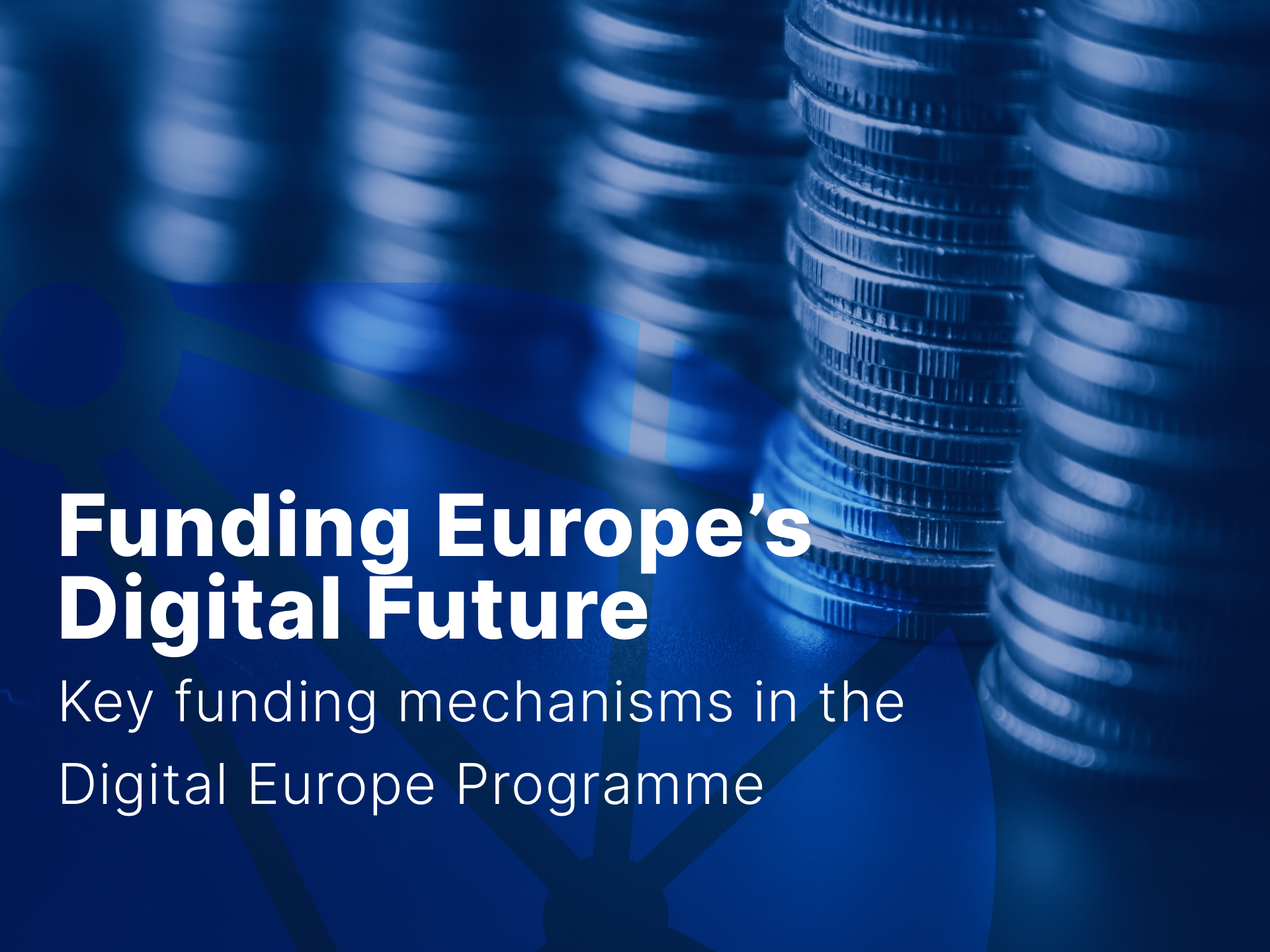The DIGITAL Europe Programme (DEP) is the EU initiative designed to further Europe’s digital transformation by funding projects through various grant types, each designed to achieve specific objectives, funding models, and operational strategies. DEP provides customised funding mechanisms to help diverse stakeholders, from SME and research groups to policymakers and procurement authorities, to advance innovation, build digital capacities, and align with EU policy objectives. DEDEP.eu, a dedicated project supporting DEP beneficiaries by providing strategic guidance, plays a fundamental role in ensuring the programme’s success.
This article explores the different types of funding mechanisms available under DEP and their distinctive roles and structures. These include Simple Action Grants, Coordination and Support Actions (CSAs), SME Support Actions, Grants for Procurement and Grants for Financial Support, Framework Partnerships (FPAs), Specific Grants (SGAs) and Lump Sum Grants.
An analysis of the first 492 projects currently funded by DEP shows a predominance of Simple Action Grants, which account for the majority of funding allocations. Following Simple Action Grants, CSAs and SME Support Actions make up a significant portion of the funded projects, reflecting DEP’s emphasis on policy alignment and SME support.
As previously mentioned, Simple Action Grants are the most commonly used under DEP, covering 50% of eligible costs. These are preferred for their flexibility, which allows beneficiaries to engage in a variety of activities, especially those related to personnel costs. Although subcontracting and financial support to third parties are allowed, they provide straightforward funding through prefinancing, interim payments, and a final settlement.
Coordination and Support Actions (CSAs), instead, are intended to support the development and execution of EU policies. Generally smaller in scale, with budgets ranging from €1 to €2 million, these grants finance activities like coordination, standardisation, awareness-raising, and networking. Unlike other types of grants, CSAs offer 100% funding, which reflects their connection to public policy objectives. Similar to Simple Action Grants, the payment structure includes prefinancing, interim payments, and final settlements. This type of funding is also available in other EU programmes, such as Horizon Europe.
Supporting SMEs is a key priority of DEP, and the SME Support Actions is a type of funding specifically designed to meet this need. These grants assist SMEs in developing and implementing digital capabilities, often in collaboration with other partners. SMEs get a higher funding rate of 75%, while other consortium members receive a standard rate of 50%. This strategy ensures that smaller organisations, which frequently encounter resource limitations, can actively engage in and gain from the programme. The beneficiaries are required to submit regular progress and financial reports, along with a final evaluation of stakeholder outcomes.
Grants for Procurement are designed to help organisations acquire necessary goods and services, particularly in the realm of digital innovation. These grants restrict personnel costs to only essential management and coordination roles and cover 50% of eligible expenses. In contrast, in the case of Grants for Financial Support, funds are allocated to third parties while adhering to EU principles of transparency, non-discrimination, and financial accountability. The consortium receives full funding, while third-party beneficiaries are responsible for co-financing 50% of their activities.
Framework Partnerships (FPAs) and Specific Grants (SGAs) promote long-term cooperation between the granting authority and beneficiaries. While FPAs outline objectives and procedures, SGAs implement specific actions. FPAs are unfunded, whereas SGAs provide 50% funding. Payments are made through prefinancing, interim, and final payments.
Lastly, Lump Sum Grants provide a distinctive funding approach by reimbursing a predetermined amount for the entire project. This setup removes the necessity for beneficiaries to report actual expenses, instead emphasising the successful completion of deliverables. The funding rates differ (50% for general beneficiaries, 75% for SMEs) with payments distributed across prefinancing, additional prefinancing, and final settlements. Other EU programmes, like Horizon Europe, Creative Europe or European Defence Fund (EDF), use this type of funding.
Conclusion
The Digital European Programme offers a variety of funding options designed to meet the diverse needs of stakeholders such as SMEs, research groups, policymakers, and procurement authorities. By adapting grant structures to specific goals, the programme promotes innovation while ensuring that its benefits reach a wide audience. Each type of grant plays a distinct role in advancing the programme’s mission, showcasing the EU’s dedication to a digitally empowered future. In addition, DEDEP.eu is essential in assisting beneficiaries, crafting customised digital strategies, and improving engagement across different funding mechanisms. Together, these efforts enhance the success of the DEP, creating a more connected, innovative, and globally competitive Europe.
